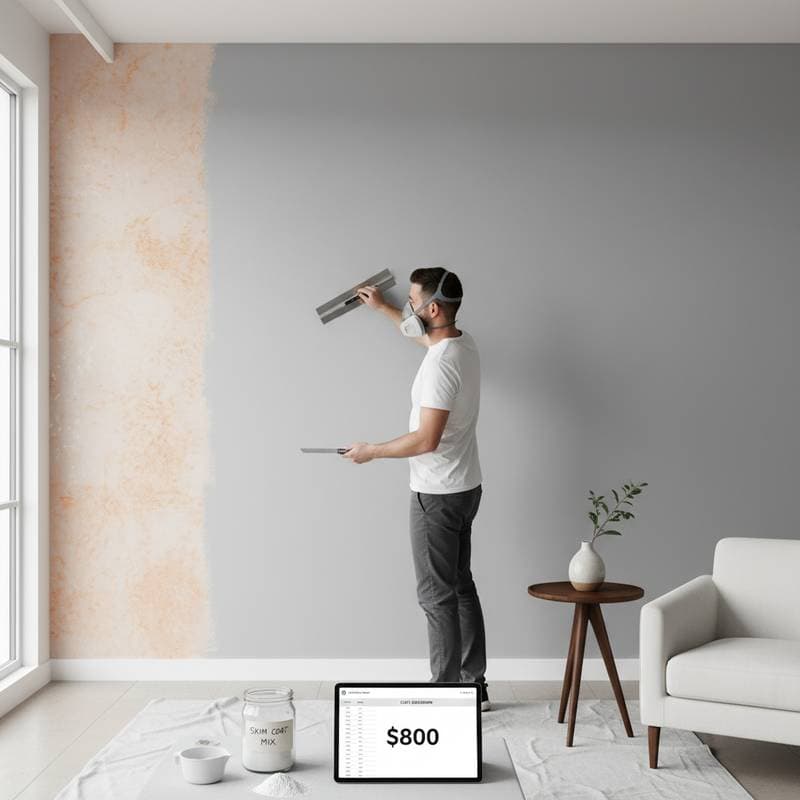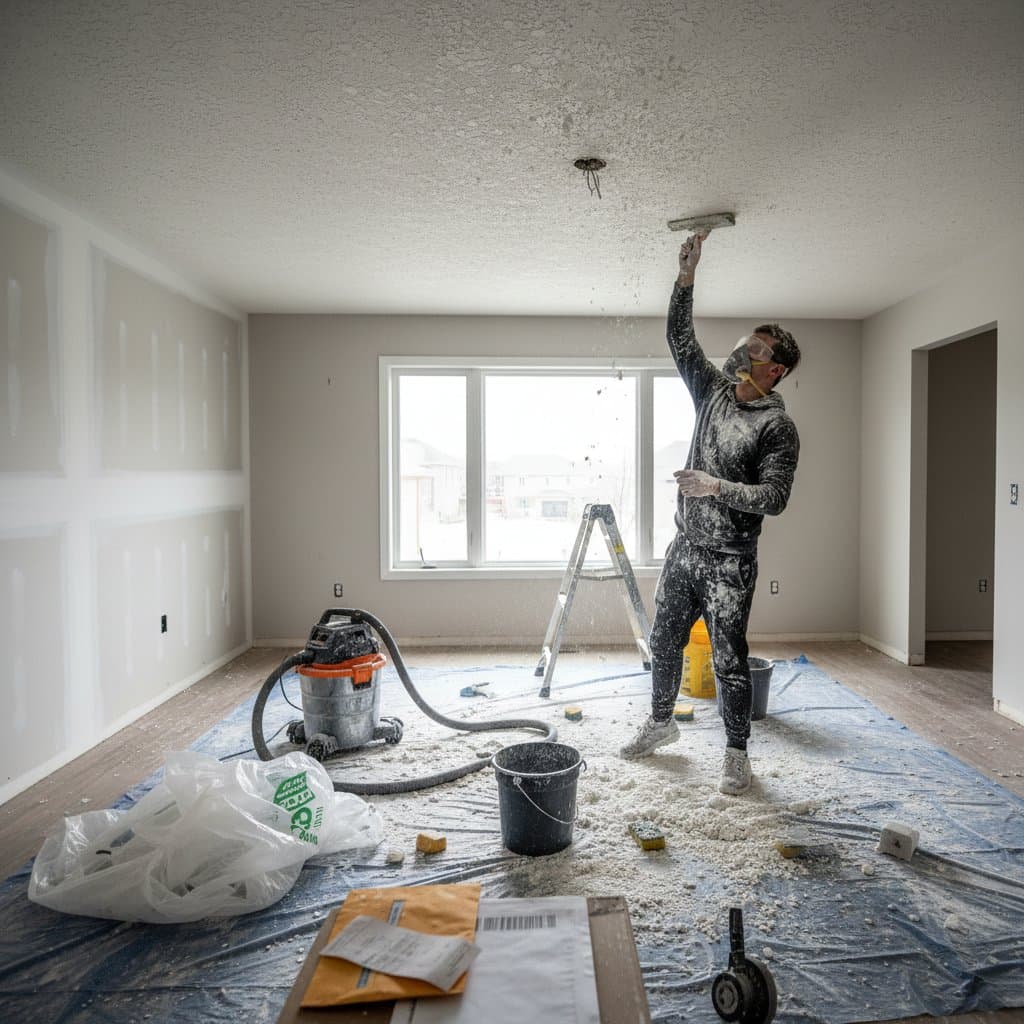Sanded vs Unsanded: The $800 Ceiling Texture Choice
Ceiling texture adds character and depth to a room while concealing surface imperfections. Among the most common finishes, sanded and unsanded textures stand out for their distinct looks and costs. Homeowners often face an $800 decision when choosing between these two options, depending on the ceiling size and finish quality desired. Understanding what drives the price difference helps ensure the right choice for both style and budget.
Ceiling Texture Cost Overview
The cost to texture a ceiling typically ranges from $1 to $3 per square foot, including materials and labor. For an average-sized room, homeowners can expect to spend $500 to $800 for a complete texture application. Sanded textures often fall on the higher end of that range due to material density and additional labor, while unsanded finishes are generally more budget-friendly.
Average Cost Ranges by Ceiling Size
- Small room (100 sq. ft.): $150 - $250
- Medium room (250 sq. ft.): $400 - $600
- Large room (400 sq. ft.): $700 - $1,000
Cost Breakdown per Square Foot
| Component | Sanded Texture | Unsanded Texture |
|---|---|---|
| Materials | $0.40 - $0.80 | $0.30 - $0.60 |
| Labor | $0.60 - $1.50 | $0.50 - $1.20 |
| Preparation | $0.25 - $0.50 | $0.25 - $0.50 |
| Clean-up and finishing | $0.15 - $0.30 | $0.10 - $0.25 |
Factors Affecting Ceiling Texture Costs
Material composition: Sanded texture contains fine aggregates that create a subtle grainy finish. These materials cost slightly more and require careful mixing to avoid clumping. Unsanded compounds use smooth joint compound, which is easier to apply and less expensive.
Surface condition: Ceilings with cracks, stains, or uneven drywall require more preparation. Repairs can add $100 to $300 to the total cost depending on severity.
Application method: Spray textures are quicker to apply but need specialized equipment. Hand-applied textures take longer and increase labor costs, especially for sanded finishes that demand even distribution.
Ceiling height and access: Taller ceilings or areas with fixtures and vents may increase labor time and safety measures, adding $0.25 to $0.50 per square foot.
Detailed Cost Analysis by Texture Type
| Texture Type | Basic Range | Standard Range | Premium Range | Key Differences |
|---|---|---|---|---|
| Sanded | $1.50 - $2.25 | $2.25 - $3.00 | $3.00 - $3.50 | Textured finish with fine grit for subtle shadowing |
| Unsanded | $1.00 - $1.75 | $1.75 - $2.50 | $2.50 - $3.00 | Smooth or lightly patterned finish with minimal grit |
Value and ROI Considerations
Money-Saving Strategies
- Combine ceiling and wall work to reduce setup and equipment costs.
- Take on minor preparation tasks like sanding or cleaning to lower labor hours.
- Schedule during lower-demand seasons when contractors may offer better rates.
- Opt for standard-grade materials that balance appearance and performance.
- Request multiple quotes to compare labor efficiency and pricing transparency.
Planning Your Budget
Frequently Asked Questions
1. What is the average cost of a sanded or unsanded ceiling texture?
Most homeowners spend between $500 and $800 for a medium-sized room. Sanded textures usually cost about 20 percent more due to material density and additional labor.
2. What factors have the biggest impact on ceiling texture costs?
The main cost drivers include ceiling size, surface condition, texture type, and application method. Tall ceilings or areas with lighting fixtures also increase labor time.
3. How can I save money on ceiling texturing without sacrificing quality?
Prepare surfaces yourself, schedule work during off-peak times, and request itemized quotes to compare pricing. Avoid unnecessary premium finishes unless they add clear visual value.
4. Should I hire professionals or attempt ceiling texturing as a DIY project?
DIY may save money but requires skill to achieve even coverage. Professionals ensure consistent results and faster completion, especially for sanded textures that demand experience.
5. How do I budget for unexpected costs in ceiling texture projects?
Include a 10 to 15 percent contingency for repairs, patching, or cleanup. Discuss all potential add-ons with your contractor before starting work.
6. When is the best time to schedule ceiling texturing for lower costs?
Contractors often offer competitive pricing during slower months when demand dips. Booking early and being flexible with timing can reduce total project costs.



